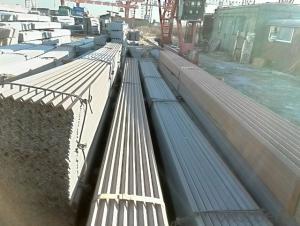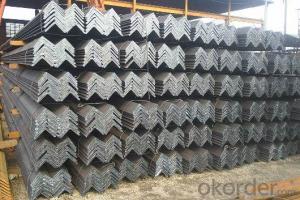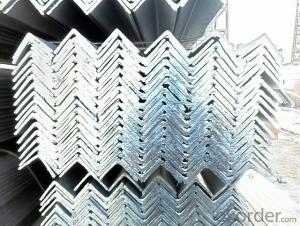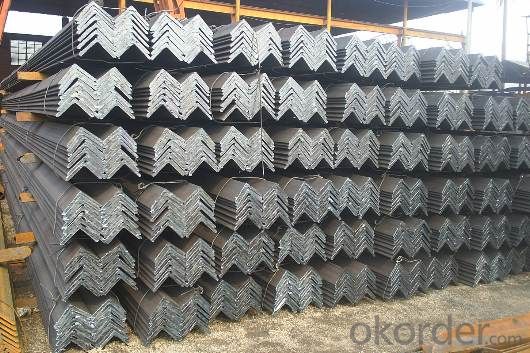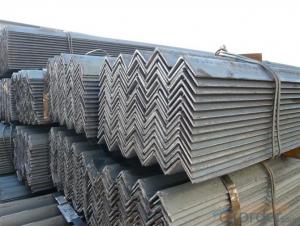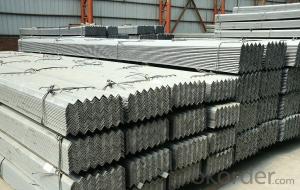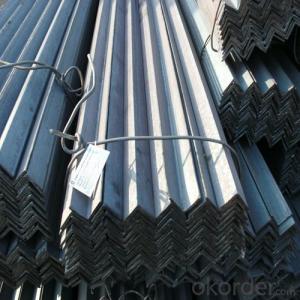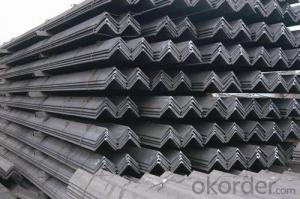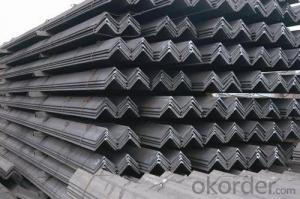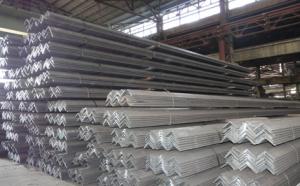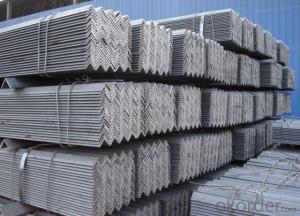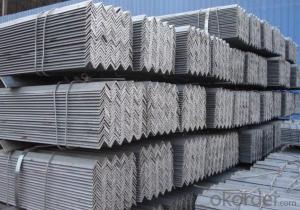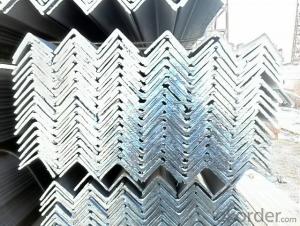Hot Rolled Angle Steel with High Quality
- Loading Port:
- Tianjin
- Payment Terms:
- TT OR LC
- Min Order Qty:
- 25 m.t.
- Supply Capability:
- 20000 m.t./month
OKorder Service Pledge
OKorder Financial Service
You Might Also Like
Product Description:
OKorder is offering high quality Angle Steel at great prices with worldwide shipping. Our supplier is a world-class manufacturer of steel, with our products utilized the world over. OKorder annually supplies products to European, North American and Asian markets. We provide quotations within 24 hours of receiving an inquiry and guarantee competitive prices.
Product Applications:
Angle Steels are ideal for structural applications and are widely used in the construction of buildings and bridges, and the manufacturing, petrochemical, and transportation industries.
Product Advantages:
OKorder's Angle Steels are durable, strong, and resist corrosion.
Main Product Features:
· Premium quality
· Prompt delivery & seaworthy packing (30 days after receiving deposit)
· Corrosion resistance
· Can be recycled and reused
· Mill test certification
· Professional Service
· Competitive pricing
Product Specifications:
Manufacture: Hot rolled
Grade: Q195 – 235
Certificates: ISO, SGS, BV, CIQ
Length: 6m – 12m, as per customer request
Packaging: Export packing, nude packing, bundled
Sizes: 25mm-250mm | ||
a*t | ||
25*2.5-4.0 | 70*6.0-9.0 | 130*9.0-15 |
30*2.5-6.6 | 75*6.0-9.0 | 140*10-14 |
36*3.0-5.0 | 80*5.0-10 | 150*10-20 |
38*2.3-6.0 | 90*7.0-10 | 160*10-16 |
40*3.0-5.0 | 100*6.0-12 | 175*12-15 |
45*4.0-6.0 | 110*8.0-10 | 180*12-18 |
50*4.0-6.0 | 120*6.0-15 | 200*14-25 |
60*4.0-8.0 | 125*8.0-14 | 250*25 |
FAQ:
Q1: Why buy Materials & Equipment from OKorder.com?
A1: All products offered byOKorder.com are carefully selected from China's most reliable manufacturing enterprises. Through its ISO certifications, OKorder.com adheres to the highest standards and a commitment to supply chain safety and customer satisfaction.
Q2: What makes stainless steel stainless?
A2: Stainless steel must contain at least 10.5 % chromium. It is this element that reacts with the oxygen in the air to form a complex chrome-oxide surface layer that is invisible but strong enough to prevent further oxygen from "staining" (rusting) the surface. Higher levels of chromium and the addition of other alloying elements such as nickel and molybdenum enhance this surface layer and improve the corrosion resistance of the stainless material.
Q3: Can stainless steel rust?
A3: Stainless does not "rust" as you think of regular steel rusting with a red oxide on the surface that flakes off. If you see red rust it is probably due to some iron particles that have contaminated the surface of the stainless steel and it is these iron particles that are rusting. Look at the source of the rusting and see if you can remove it from the surface.
Images:
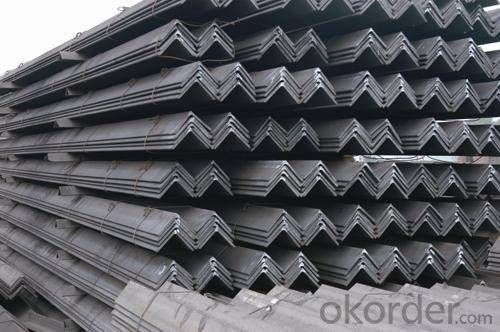
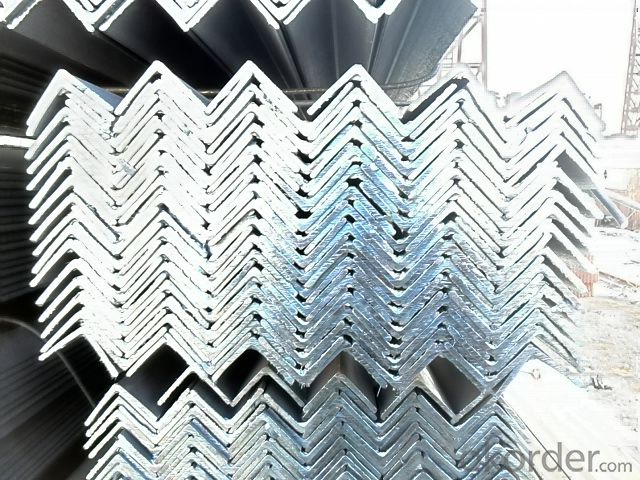
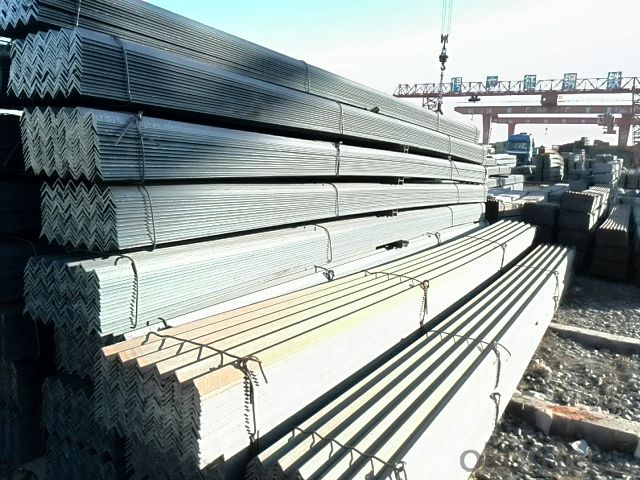
- Q: What is the cost of a steel angle?
- The cost of a steel angle can vary depending on various factors such as size, thickness, and market conditions. It is best to check with local suppliers or online retailers to get an accurate and up-to-date price for a specific steel angle.
- Q: Are steel angles available in different lengths?
- Yes, steel angles are available in different lengths.
- Q: How do steel angles perform under lateral or wind loading conditions?
- Due to their strength and versatility, steel angles find widespread use in construction and engineering. They excel in handling lateral or wind loading conditions, demonstrating exceptional performance. When subjected to lateral forces acting horizontally and perpendicular to their axis, steel angles exhibit remarkable rigidity and resistance to bending. Consequently, they can withstand substantial lateral loads, making them perfect for applications such as bracing systems, support structures, and framing components that need to resist wind, seismic, or other lateral forces. Similarly, steel angles prove their excellence in wind loading conditions. As wind exerts a strong lateral force on structures, steel angles effectively counteract these forces. By securely fastening steel angles to the structure, stability is ensured, preventing wind-induced vibrations or even collapse. To enhance the performance of steel angles under lateral or wind loading conditions, proper design and installation are crucial. Engineers take into account factors like angle size and thickness, steel type and quality, as well as connection details. By carefully analyzing specific loading conditions and selecting the appropriate steel angles, engineers guarantee that structures remain stable and safe, even under extreme lateral or wind loads. In conclusion, steel angles are highly reliable and durable in handling lateral or wind loading conditions. Their robustness, coupled with their cost-effectiveness and ease of installation, makes them a favored choice in numerous construction and engineering projects.
- Q: Galvanized steel angles under what conditions?
- Galvanized angle itself coated zinc and iron rust, common need to be coated with a layer of anti rust paint in the construction process, so the galvanized angle in the construction without paint. Suitable for field and outdoor support and Engineering
- Q: What are the common sizes and dimensions of steel angles?
- Common sizes and dimensions of steel angles vary depending on the application and industry standards. However, some standard sizes include equal leg angles ranging from 1/2 inch to 8 inches in leg length, with thicknesses typically ranging from 1/8 inch to 1 inch. Unequal leg angles are also commonly available, with leg lengths ranging from 1 inch to 9 inches and thicknesses ranging from 1/8 inch to 1 inch. It's important to note that these dimensions can vary across different countries and manufacturers.
- Q: Can steel angles be used in high-temperature applications?
- Steel angles can be used in high-temperature applications depending on the specific alloy and the temperature range. Steel alloys that have been specifically designed for high-temperature applications, such as stainless steels or heat-resistant alloys, can withstand elevated temperatures without significant loss in strength or structural integrity. These alloys often contain elements like chromium, nickel, or molybdenum, which increase their resistance to corrosion, oxidation, and high temperatures. However, it is important to note that not all steel angles are suitable for high-temperature applications. Ordinary carbon steels, for example, have a limited temperature range before they start to lose strength and become susceptible to deformation or failure. The exact temperature limit for a specific steel angle will depend on factors such as the alloy composition, heat treatment, and the duration of exposure to high temperatures. In summary, steel angles can be used in high-temperature applications if they are made from appropriate alloys that are specifically designed for such conditions. It is crucial to consult with materials engineers or experts who can provide guidance on the suitable steel alloys and temperature limits for a given application to ensure safe and reliable performance.
- Q: Can steel angles be used in electrical grounding applications?
- Yes, steel angles can be used in electrical grounding applications. Steel angles are commonly used in construction for their strength and durability. In electrical grounding applications, steel angles can be used to create grounding grids or grounding systems. These grids or systems help to prevent electrical shock hazards by providing a low-resistance path for electrical currents to flow to the ground. Steel angles are often used as structural components in these grounding systems due to their ability to withstand physical stress and their conductive properties. However, it is important to ensure that the steel angles are properly installed and connected to the electrical system in accordance with relevant codes and standards to ensure effective grounding and safety.
- Q: How much is a galvanized angle L50*50*5*2500
- Close to see, in your area prices are generally around 50, and then see if you are under the national standard how much difference in order to know the specific price
- Q: Are steel angles available in different grades of steel?
- Yes, steel angles are available in different grades of steel. Steel angles are commonly used in construction and manufacturing industries for various applications such as structural support, framing, and bracing. The grade of steel used in steel angles is determined by its chemical composition, mechanical properties, and intended use. Some common grades of steel used for steel angles include A36, A572, and A588. Each grade of steel has specific characteristics that make it suitable for different purposes. For example, A36 steel angles are commonly used for general structural applications, while A572 steel angles have higher strength and are often used in heavy-duty construction projects. The choice of grade depends on factors such as load-bearing capacity, corrosion resistance, and cost considerations.
- Q: Are steel angles suitable for agricultural applications?
- Yes, steel angles are suitable for agricultural applications. They are commonly used in the construction of agricultural buildings, fences, and equipment due to their strength, durability, and versatility. Steel angles provide stability and support, making them ideal for various agricultural tasks such as framing structures, reinforcing corners, or creating sturdy connections.
Send your message to us
Hot Rolled Angle Steel with High Quality
- Loading Port:
- Tianjin
- Payment Terms:
- TT OR LC
- Min Order Qty:
- 25 m.t.
- Supply Capability:
- 20000 m.t./month
OKorder Service Pledge
OKorder Financial Service
Similar products
Hot products
Hot Searches
Related keywords
